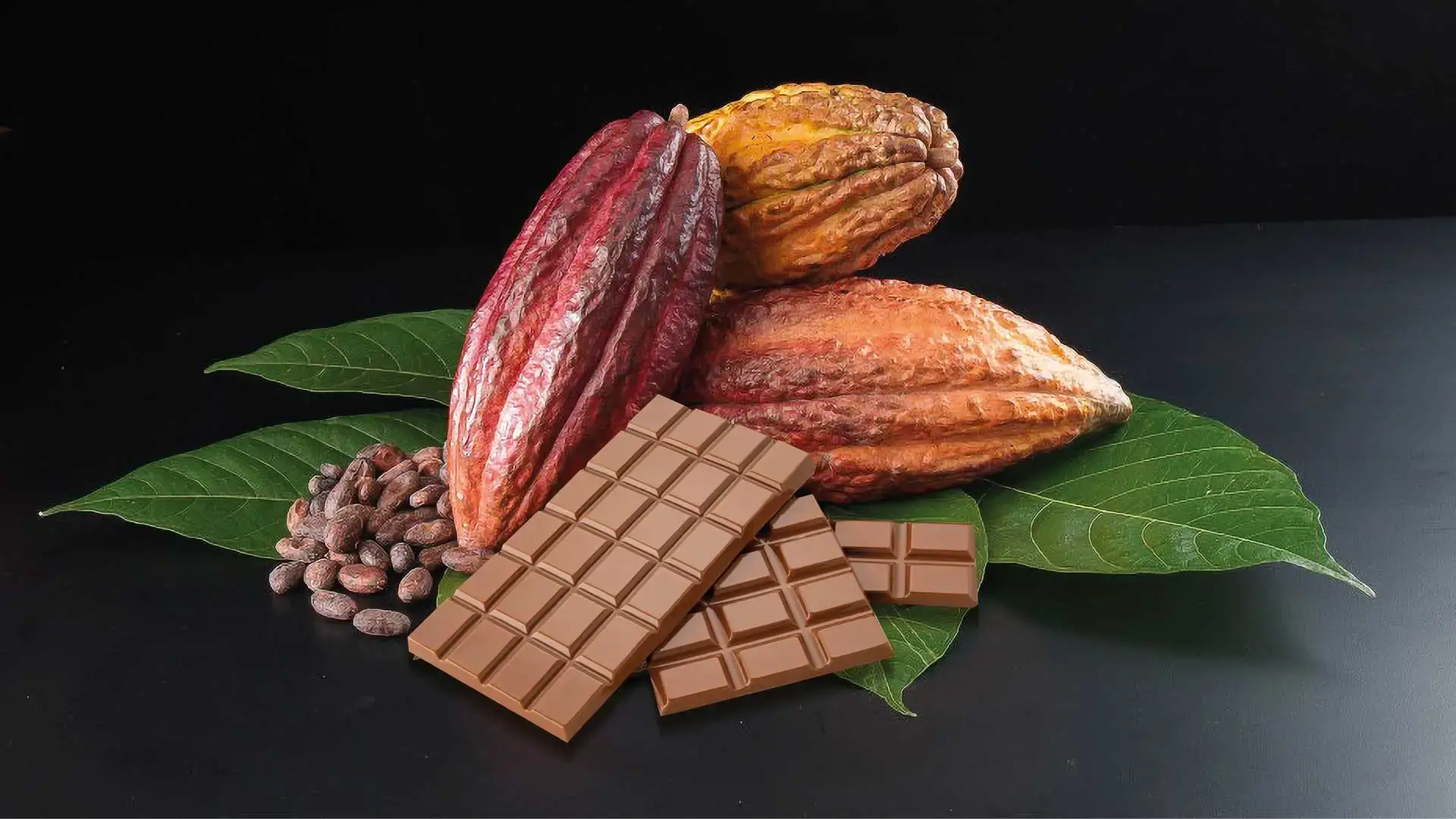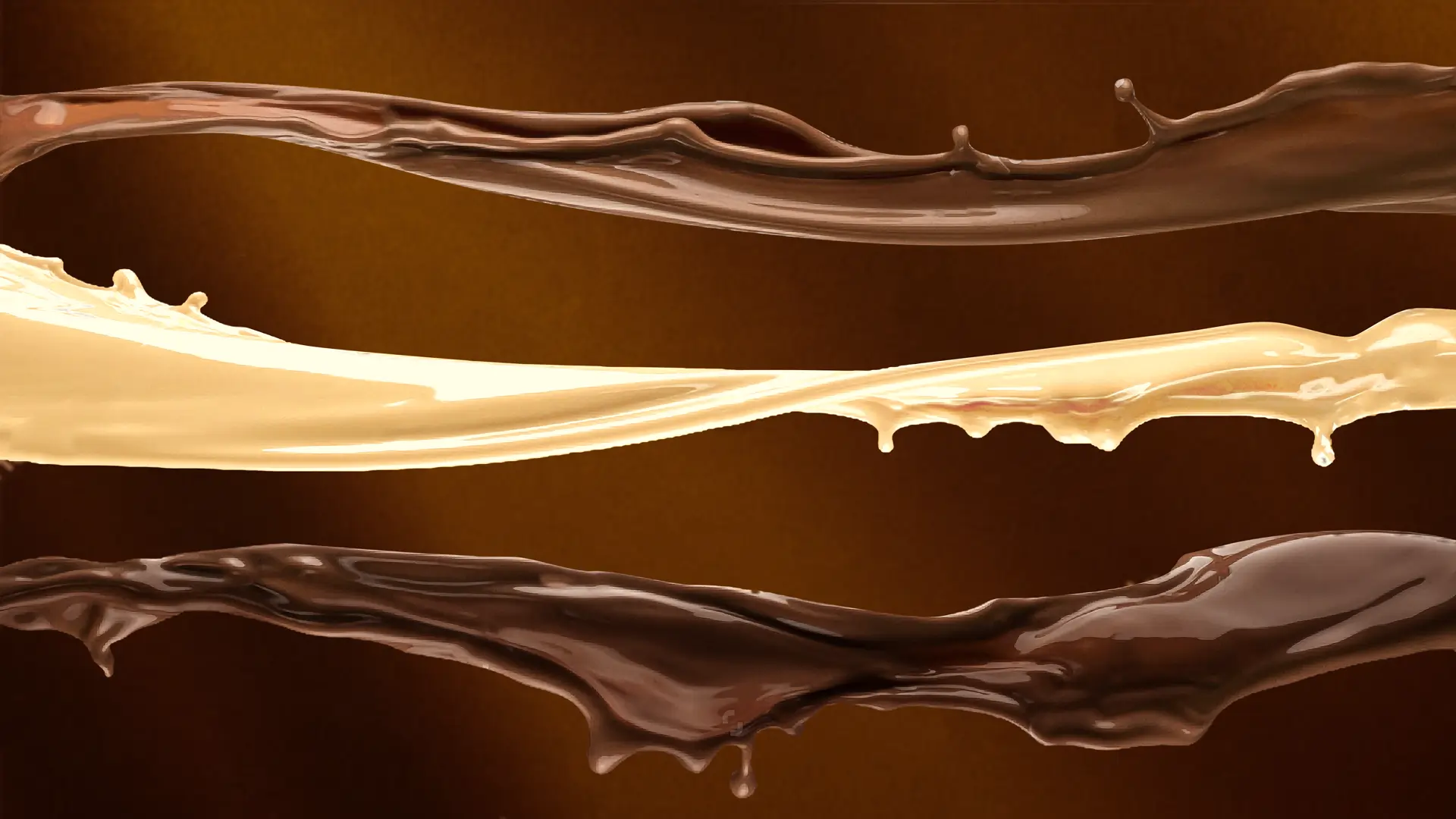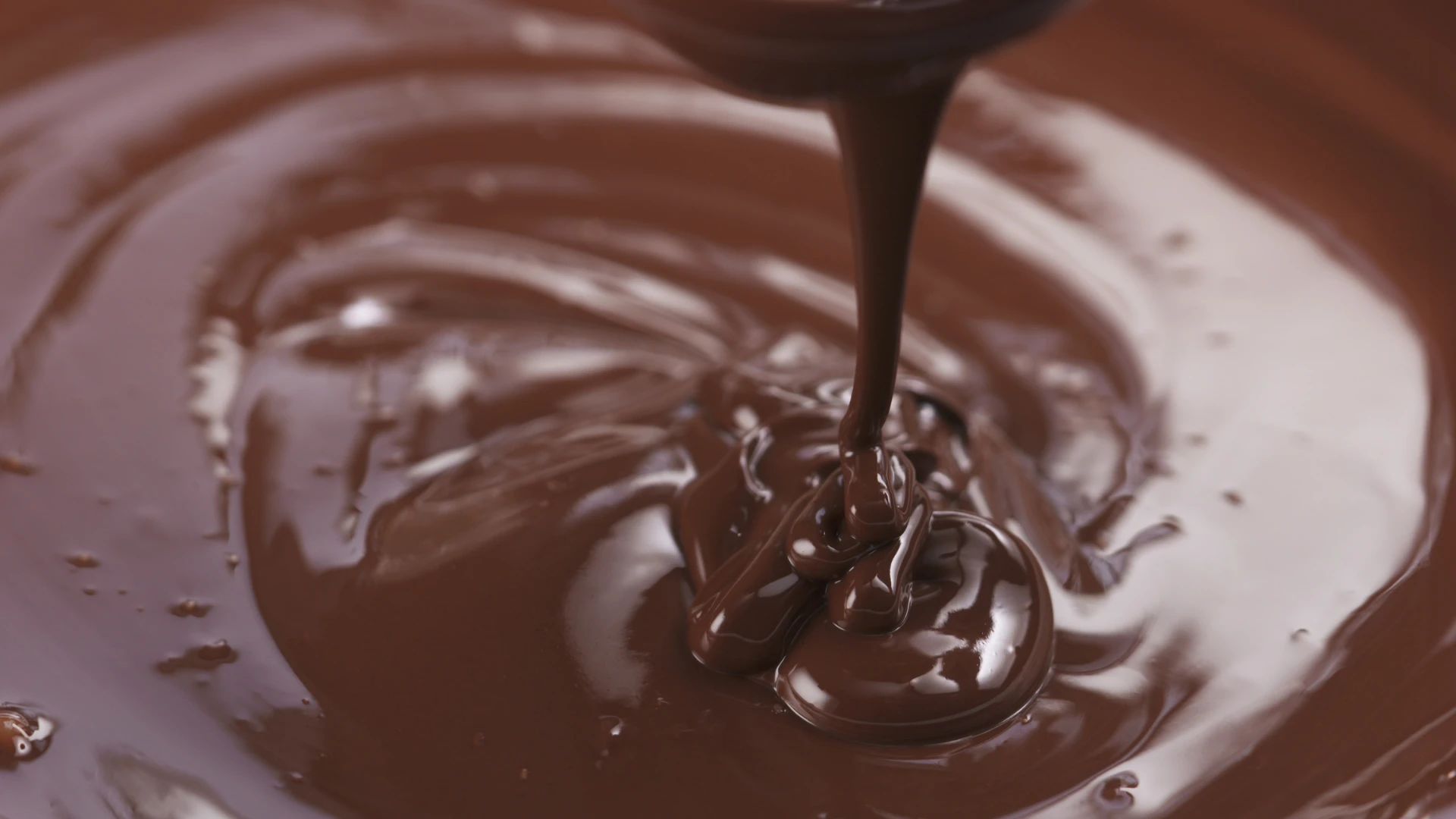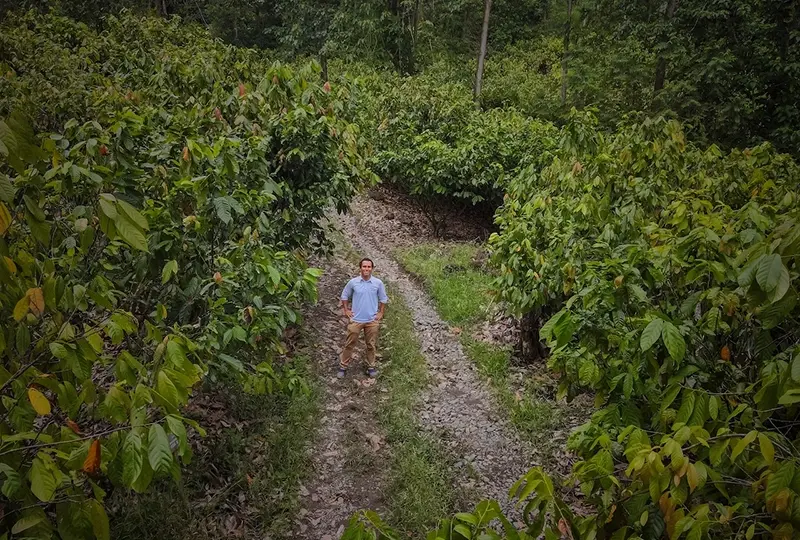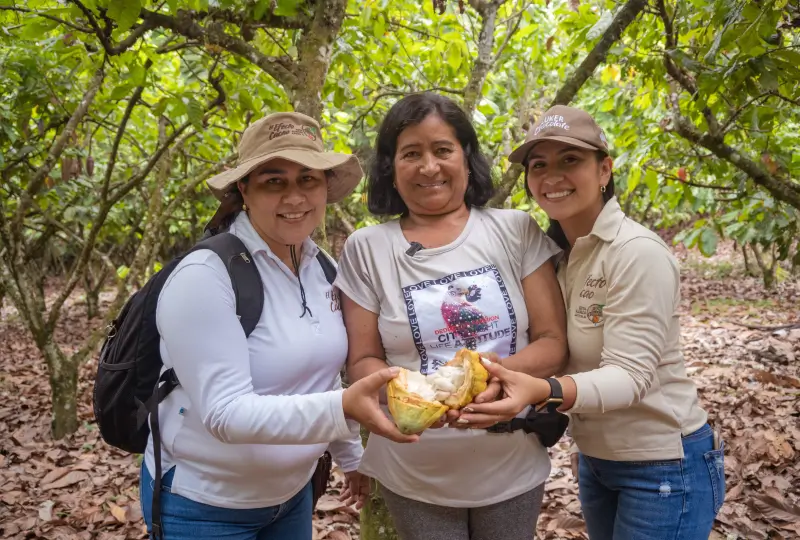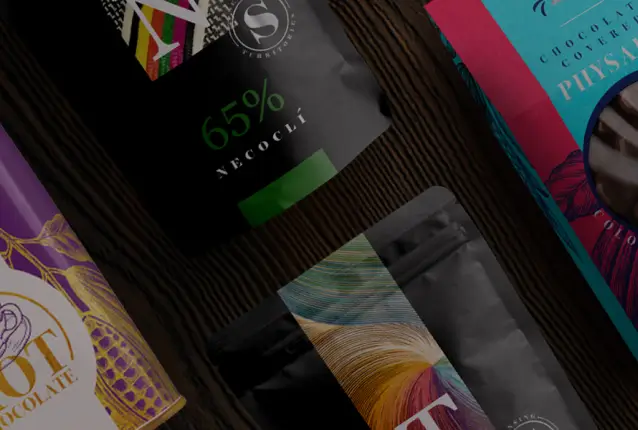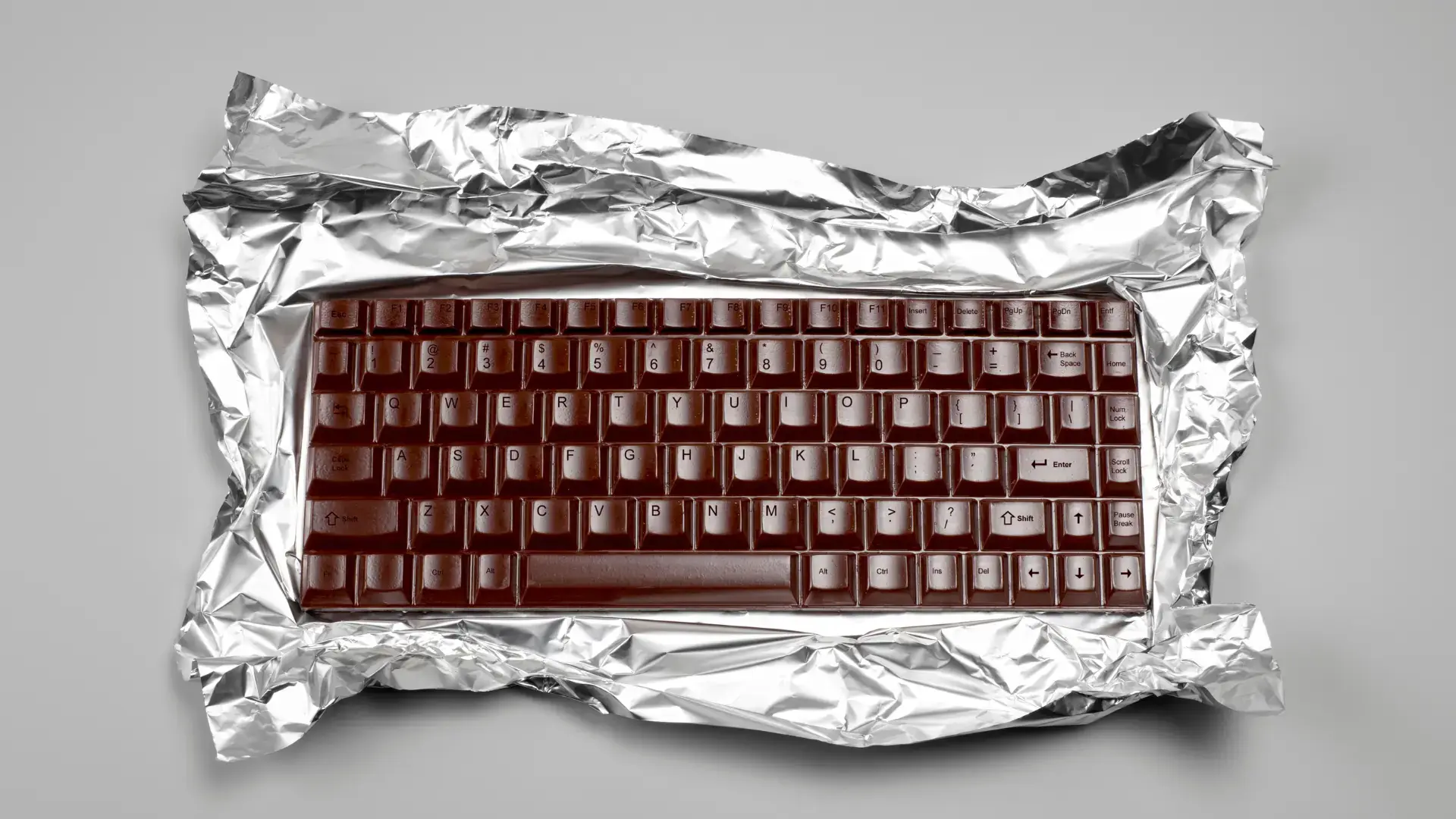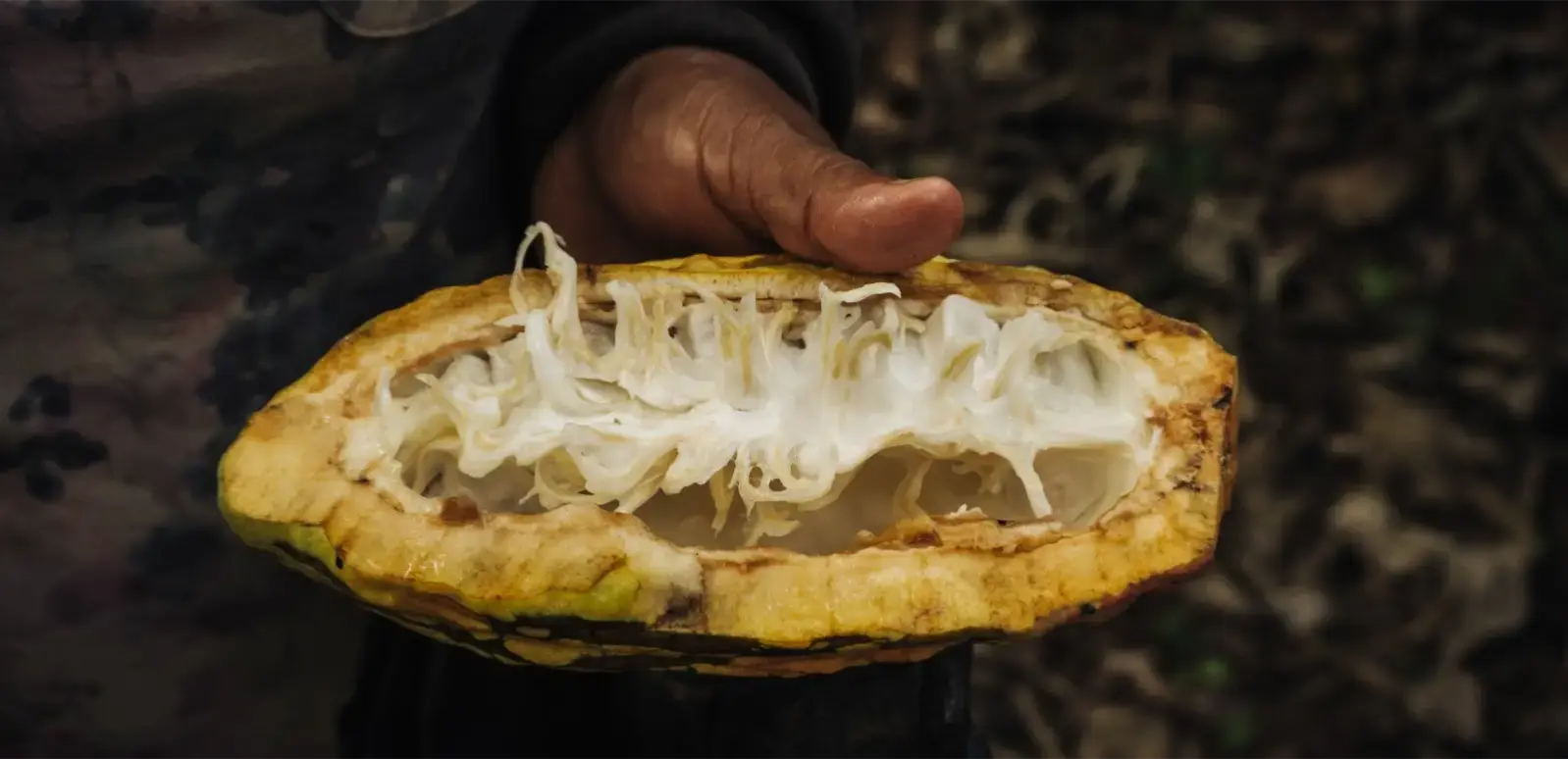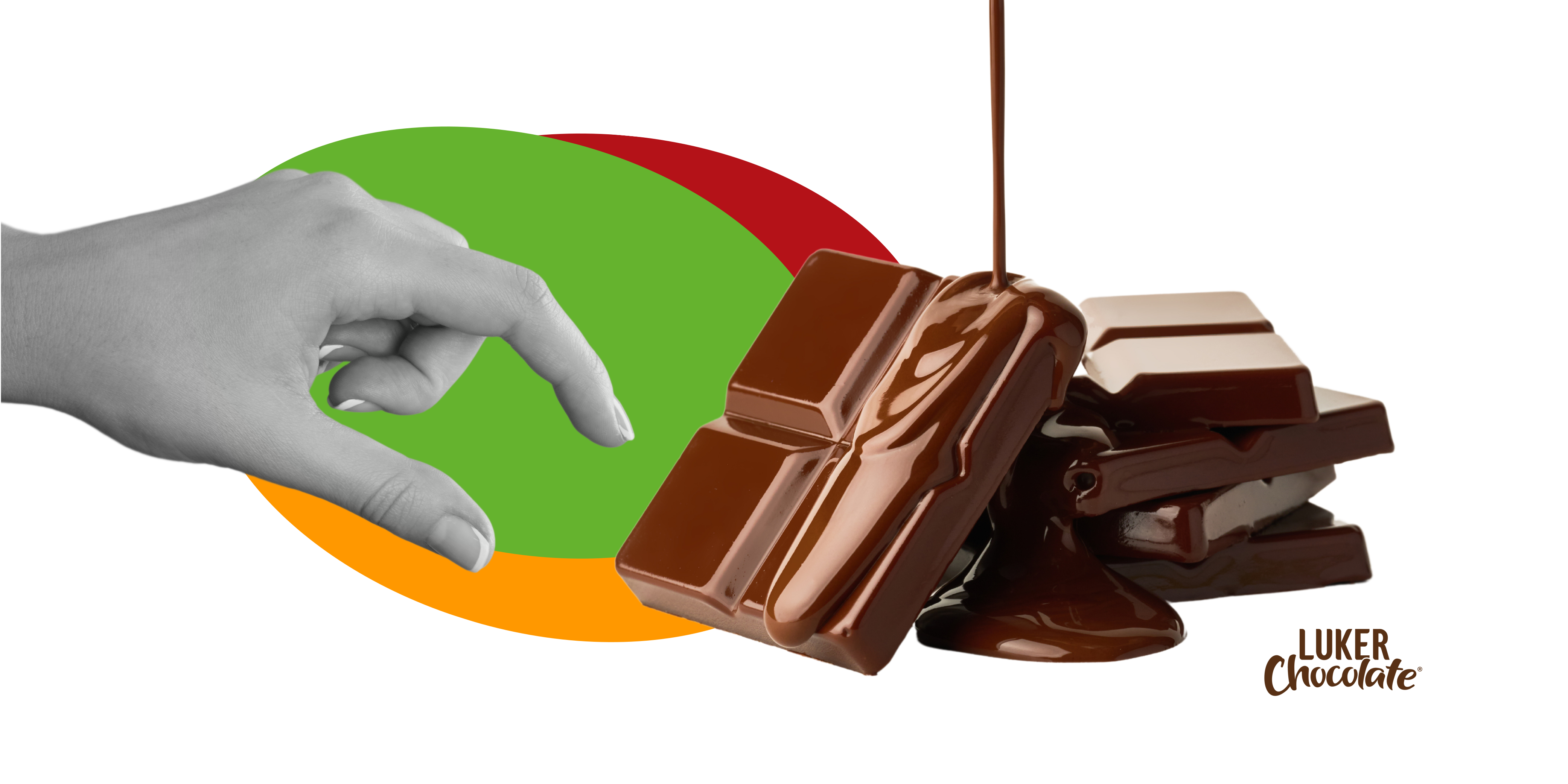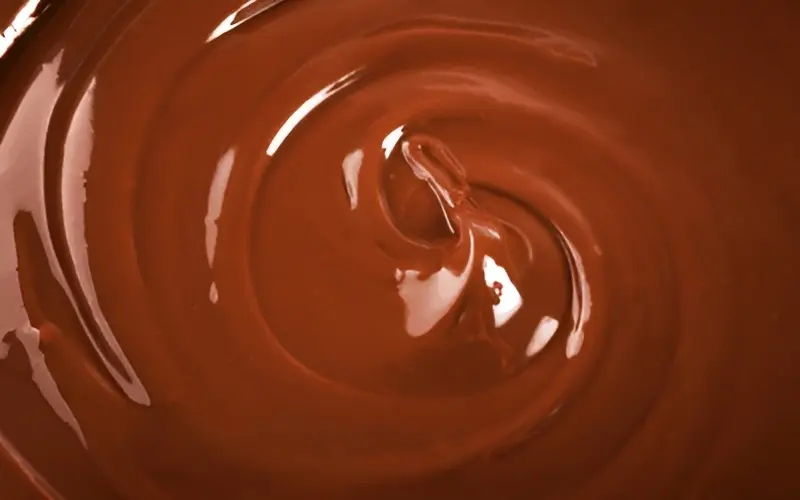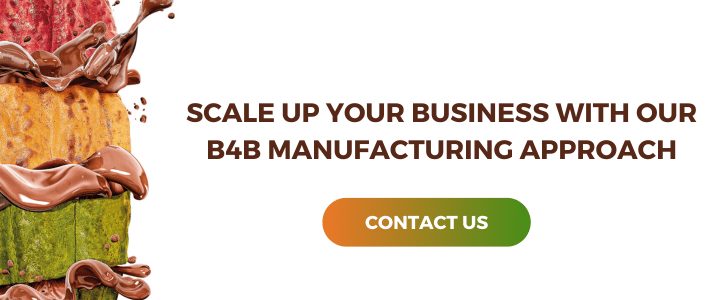| Updated and republished on 09th of April, 2025 |
| This blog was originally posted on 17th May 2024 and has been updated for clarity, relevance, and accuracy. |
Conching chocolate is a fundamental step in the Chocolate Manufacturing process. Read the following blog to learn all about it, or navigate this content menu and find answers to your questions:
- The Process Behind a Chocolate Product.
- What is Conching in chocolate making?
- Horizontal Vs. Vertical Conching
- Importance of conching in the chocolate manufacturing process
- What does Conching look like?
- Phases Involved in Chocolate Conching
- How to choose the right conching conditions for your chocolate applications?
- How does Luker do it?
The process behind a deliciously flavoured and smooth chocolate
For many consumers, little is known about how much is done to a cocoa bean before it can be turned into chocolate. More than a mystical metamorphosis, this transformation brings nature, science, and art together. To bring a chocolate couverture to life, fermented and dried cocoa beans are selected, winnowed, roasted, ground into cocoa mass, mixed (with other ingredients), refined, and finally conched.
Continue reading below to discover more about the process behind Luker’s chocolate products:
Rudolph Lindt, a Swiss chocolate maker, discovered the conching process in 1879. Having accidentally left a mixer containing chocolate running overnight, he woke up to realise that this had changed the chocolate’s flavour and texture. The name of the equipment, the conche, is derived from the Latin word ‘shell’, as the traditional conche used in chocolate manufacturing resembled a conch shell.
Nowadays, the conching process is the final step in the manufacturing of chocolate. Whether it’s milk or dark, it is an essential process that contributes to developing viscosity, final texture, and flavour. For Luker especially, conching is a magical process. This is an opportunity for us to work with clients and our development team’s expertise to build various flavour profiles. With just a little help from technology, you can start with one flavour and completely transform it into another.
What is conching in chocolate making?
Conching is a vital part of chocolate making. It entails the continuous mixing, grinding, and kneading of chocolate mass over a prolonged period. The conche, a machine specially designed for this purpose, is used in the process. This machine is essential to refine chocolate, ensuring a smooth and consistent texture.
The chocolate is heated and stirred during the conching process while undergoing mechanical shear forces. This process achieves several essential objectives consistently.
- Texture development: Conching helps the chocolate develop a smooth and velvety texture. The agitation and kneading action reduce the particle size of cocoa solids and sugar crystals, resulting in a fine, homogeneous mixture.
- Flavour enhancement: Conching contributes to developing the desired flavour profile of the chocolate. It allows the volatile flavours to evaporate, which can eliminate any harsh or unwanted flavours. Additionally, the process promotes the interaction between cocoa solids and cocoa butter, leading to the release of flavour compounds and the formation of desirable aromatic notes. This interaction significantly enhances the overall chocolate quality.
- Moisture removal: During conching, any residual moisture in the chocolate is evaporated, enhancing the shelf life and stability of the final product.
- Chemical and physical changes: Conching promotes chemical reactions, such as acid-base reactions, oxidation, and reduction processes, which can further refine the flavour and colour of the chocolate. Additionally, conching aids in reducing the acidity of cocoa and improving its pH.
Horizontal vs. Vertical Conching
When we are in this step of the chocolate-making process, we must remember that there are two ways of performing the conching process: Vertical and Horizontal conching.
The type of conching to use depends on various factors, including:
- Cocoa bean origin: Since cocoa bean origins can differ among regions and countries, so do the flavour notes each origin has. This is very important when choosing the type of conching, as we must consider the flavour profile we want to be highlighted in the chocolate formulation we want to achieve.
- Type of couverture: Depending on whether we want a dark, milk or white chocolate couverture, the concentration of ingredients in each changes, which affects the conching process for each couverture. Higher temperatures are used for dark chocolate, which influences its flavour and texture.
- Volume of raw material: The formulation to be made and the desired sensory profile are altered depending on the amount of raw material to be processed, as this directly affects the type and time of conching required.
The main difference between these conching types is how the conch machine’s axis is set up. Both of them get the work done. However, the horizontal one has the advantage of completing steps in the dry and plastic phases, which helps enhance the development of flavour and rheology.
Importance of conching for the chocolate-making process: Enhancing chocolate quality
Amongst the chocolate-making industry, we discuss ‘cocoa solids’ as particles that carry a chocolate bar’s colour, taste, and nutritional value. However, these particles also have intense bitter and astringent notes, which are given by polyphenols or antioxidants in cocoa. Additional off-flavours, such as acetic acid, are also leftover from the fermentation process.
This processing step, which consists mainly of mixing, shearing, and aeration of the chocolate mass at a specific temperature and for a certain amount of time, is considered a critical step for two main reasons:
- During conching, the tiny particles of solids (often cocoa, sugar, and milk) acquire a more uniform shape to be coated evenly with cocoa butter. This gives chocolate viscosity, flow, and textural properties and determines how the finished product will melt smoothly in the mouth. The smooth texture of the finished chocolate is a direct result of this process.
- The conching process promotes flavour development through several factors, such as time, temperature, and the other ingredients in the recipe. However, it also removes moisture and volatile flavours (short-chained fatty acids and aldehydes) that are highly related to the origin and characteristics of the cocoa beans. This is one of the most important reasons why Luker Chocolate’s conching process differs from other chocolate manufacturing companies.
Amongst the scientific community, different researchers have put forward differing opinions on how many phases there are in the conching process. Some researchers define conching as a two-phase process. The first stage, known as the ‘dry phase’, reduces the moisture level. All solid particles have fat on their surfaces, which removes some volatile acids like acetic acid that result from cocoa fermentation. In the second stage, called the ‘wet phase’, a homogenous and paste-like fluid mass is obtained by adding more cocoa butter and emulsifiers.
Chemical and physical changes explained
Some say that this process has three phases. This is also what we believe and perform at Luker Chocolate, which can be described as follows:

Phases involved when conching chocolate:
1. DRY PHASE
The chocolate mass is transferred from the refiner, generally as flakes, to be heated, mixed and aerated. The primary objective of this stage is to allow the evaporation of some of the volatile acids from cocoa liquor and the water originating from the chocolate components. The total concentration of acetic acid after the dry conching stage remains approximately constant, as no free water acts as a vapour carrier.
2. PLASTIC PHASE
Next, the mass which is mixed, sheared, heated and degassed, enters the second phase that we call the ‘long step’. At this stage, flavour characteristics are developed through chemical reactions (Maillard reaction and Strecker’s degradation) based on the process’s time and temperature conditions. This is another important step in reducing the volatilisation of acetic acids due to cocoa fermentation.
It is called the ‘plastic phase’ because of the physical change that occurs to the mass, turning from flakes into a paste and becoming more liquid as the cocoa butter covers the solid particles. Time and temperature play a key role in this stage. The temperature is more closely related to the type of chocolate being manufactured (dark, milk or white). Time has to do with factors dependent on the quality and variety of beans used to produce the cocoa liquor.
3. LIQUID PHASE
This phase is the shortest, where the viscosity and flow properties undergo the final adjustments with the addition of cocoa butter and emulsifiers.
The technology used is extremely important (i.e., actual conching machinery designs are more efficient in energy and time). In the conching process during the plastic phase, normally, milk chocolates are conched at around 50°C to prevent the caramelisation of the product. Should the temperature be any higher, this causes lumps and sandiness in the mouth when eating the final product.
Some dark chocolates, on the other hand, can be conched up to 90°C because of their intense load of volatile by-products from fermentation. However, conching time is a big discussion point at this stage, because it is here that the quality, type and origin of the beans play a determinant role.
Throughout the years, Luker Chocolate has built extremely close relationships with Colombian farmers, sharing knowledge and experience. This guarantees exceptional quality characteristics by the end of the fermentation process and the drying of the cocoa beans. Supported by the ‘Colombian ‘Fino de Aroma’ cocoa beans, which are naturally complex in their flavour profile with delicate fruity, floral, and herbal notes, we apply temperature and conching time for every chocolate couverture we produce. Luker can deliver finished products to customers worldwide with unique, high-quality flavour experiences.
How to choose the right conching conditions for your chocolate applications?
Conching isn’t a one-size-fits-all process—each type of chocolate requires different treatment to achieve the best flavour, texture, and functionality, whether it's for moulding tablets, enrobing centres, coating snacks, or developing a luxurious hot chocolate.
Here are key variables to consider for chocolate manufacturers and brand developers:
Chocolate Type:
Dark chocolate, with its higher concentration of cocoa solids and fermentation-derived acids, typically benefits from higher conching temperatures and longer times. This helps remove unwanted volatiles and develop bold, smooth profiles without excessive bitterness.
In contrast, milk chocolate is more delicate. Higher temperatures can cause caramelisation of dairy solids, which may affect both texture and flavour. Conching milk chocolate at lower temperatures allows for the right balance between creamy texture and aromatic notes.
- Dark chocolate often requires higher temperatures (70–90°C) to enhance fluidity.
- Milk chocolate is conched at lower temperatures (~50°C) to avoid caramelisation and preserve its creamy notes.
Application Requirements:
Enrobing and coating need precise viscosity control. A longer plastic phase helps fine-tune fluidity and eliminate graininess.
Moulded products benefit from enhanced flavour release and melt-in-mouth texture, which comes from longer conching times and fine particle size distribution.
Ingredient Interactions:
Ingredients like dairy powders, sugar substitutes, or inclusions (fruit, spices, proteins) will affect fat absorption and flavour release—both of which are fine-tuned during conching.
Some innovations (like protein-enriched chocolate) may need rethinking time-temperature curves to avoid mouthfeel issues. Working with a partner who understands these parameters is essential to technically and creatively unlocking chocolate’s full potential.
| 📝Each recipe at Luker is fine-tuned according to its cocoa origin and final application; we adjust conching time, temperature, and shear to suit the flavour potential and final use of each couverture. Whether it's a bold dark for enrobing or a delicate milk for moulded pieces, we intentionally refine each chocolate. |
This is how we do it in our manufacturing plant:
Here at Luker Chocolate, with state-of-the-art technology and our Colombian Fine Flavour cocoa beans, our conching process ranges from 2 to 7 hours. This length of time makes us different in terms of processing conditions during chocolate manufacturing. There is more to keep, such as the aromatic compounds of vanilla or the fruity or caramel-like flavours than to take away from the original product. Parallel to this, we must develop the fluidity and mouthfeel of the product to maintain a luxury experience.
During this period, it’s also important to remember that the senses of taste and smell are in the form of volatile molecules. During the conching process, these molecules are responsible for the aroma and flavour. However, like a perfume, if left open for a long period and shaken about, you will lose the original aroma.
Other companies around the world that manufacture chocolate couvertures, working with bulk cocoa beans, can apply conching processes from 12 to 78 hours. This is due to the high levels of acetic acid and other compounds that can have a negative impact on the final flavour of the chocolate. A disadvantage in terms of production efficiency is due to the long heat treatment and high sheer (costs and energy), as well as a less indulgent and delicious sensory profile than one would expect from chocolate. With an exquisite profile such as the Fino de Aroma cacao, we don’t want our cocoa to taste plain and lose all its beauty! So, by using high-quality products and shorter periods, we don’t have to compromise all the amazing characteristics during the process.
We hope that with this information, the next time you eat chocolate, you can close your eyes and pay attention to the texture as the chocolate melts in your mouth. Take a slight breath of air to assess the flavour and remember that behind that complexity, the joint work of science and nature is the magic behind your new sensory experiences.
Chocolate conching is a crucial process in chocolate production that involves continuously mixing and aerating the chocolate mass at a controlled temperature. This process, typically lasting several hours, helps to refine the texture and flavour of the chocolate by breaking down larger particles, evaporating undesirable volatile acids, and promoting the development of desirable flavour compounds. Conching results in smoother, creamier chocolate with a well-rounded flavour profile. Luker Chocolate employs meticulous conching techniques to ensure their Fine Flavour Cocoa products achieve optimal taste and texture.
Conching significantly affects chocolate flavour by refining and developing the taste profile. During the conching process, chocolate is continuously mixed and aerated, which helps to evaporate unwanted volatile acids that can cause bitter or sour notes. This process also promotes the development of desirable flavour compounds, enhancing the chocolate's complexity and depth. Additionally, conching smooths out the chocolate's texture, making it creamier and more enjoyable to eat. Luker Chocolate uses precise conching techniques to ensure their Fine Flavour Cocoa products achieve a rich, well-balanced flavour and superior mouthfeel.
You may also want to read:
What changes occur in chocolate during conching?
Conching & refining chocolate
